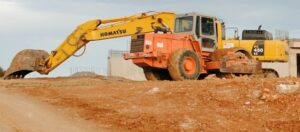Posts by Janmari Tanga-an
Dashpivot Article – ANSI Eye Protection
Use and edit template for free Use this template now ANSI Eye Protection In this article, we’ll take a quick look at what ANSI means, how it has provided strict rules in safety glasses, a simple explanation of the Z87.1 safety standard, the different types of ANSI-approved eyewear, and how digital solutions can enhance safety…
Read more →Dashpivot Article – Fall Protection Plan Example
Use and edit template for free Use this template now Fall Plan Protection Example Having a fall protection plan in height-related hazards and high-risk industries is extremely important. This article mainly covers examples of fall protection plans, what they should include, and how you can create one. A quick guide to a fall protection plan…
Read more →Dashpivot Article – OSHA Emergency Action Plan Requirements
Use and edit template for free Use this template now OSHA Emergency Action Plan Requirements In this article, we will cover the requirements needed for an Emergency Action Plan (EAP) as required by the Occupational Health and Safety Act (OSHA), as well as suggest ways to streamline the entire EAP processes. A quick look at…
Read more →Dashpivot Article – Forklift Safety Procedures
Use and edit template for free Use this template now Forklift Safety Procedures This article covers the essential forklift safety procedures, and to make it easier to digest to workers and relay relevant information, see at the end how digital solutions can reinforce safety procedures and practices related to using forklifts. OSHA forklift safety rules…
Read more →Dashpivot Article – What is Excavation Safety?
What is Excavation Safety? In this article, we answer the question, “What is Evacuation Safety?”, discuss the consequences of poor evacuation practices, and provide a free and useful tool for making your team more excavation safety aware. Why is Excavation Safety critical? Excavation safety is critical because multiple hazards exist when you’re doing excavation works.…
Read more →Dashpivot Article – OSHA Heat Stress Standard
Use and edit template for free Use this template now OSHA Heat Stress Standard In this article, we will discuss what OSHA has provided to address heat stress and hazards in the workplace, how you can prepare, and how you can continuously stay compliant with the standards and best practices. Table of Contents Summary Why…
Read more →Dashpivot Article – Mental Health Awareness in Construction
Mental Health Awareness in Construction Why Does Mental Health Awareness Matter in the Construction Industry? Mental health awareness in construction matters, as it has a significant impact and contribution to the overall well-being of construction workers and employees. It’s crucial to address and prioritise both physical and mental health in the workplace because they are…
Read more →Dashpivot Article – Mental Health in the Construction Industry
Mental Health in the Construction Industry Why Prioritise Mental Health in the Construction Industry? Prioritising mental health in the construction industry is necessary to foster a safe, supportive, and sustainable workplace. This practice benefits both the workers and the entire organisation. The construction industry experiences high levels of stress, deadlines, physical demands, long hours of…
Read more →Dashpivot Article – Pre-Job Brief Example
Use and edit template for free Use this template now Pre-Job Brief Example In this article, we’ll walk you through a real-life pre-job brief example, showing you how to run one that gets the work started correctly and effectively every time. Table of Contents Summary What makes a Pre-Job Brief essential before work begins? What…
Read more →Dashpivot Article – Safety Moment Confined Space
Use and edit template for free Use this template now Safety Moment Confined Space Here we’ll dig deep into what a safety moment for confined space is, why such a high-risk environment need safety talks, how you can lead a proper safety moment to keep workers safe, and how to keep up with the regulations…
Read more →







